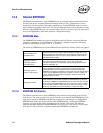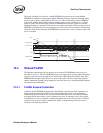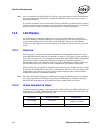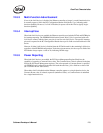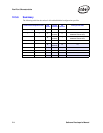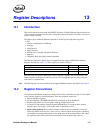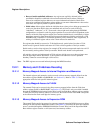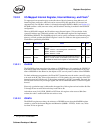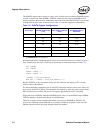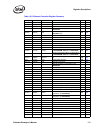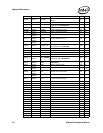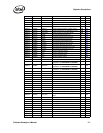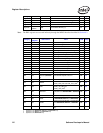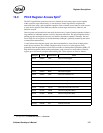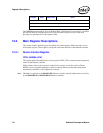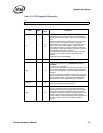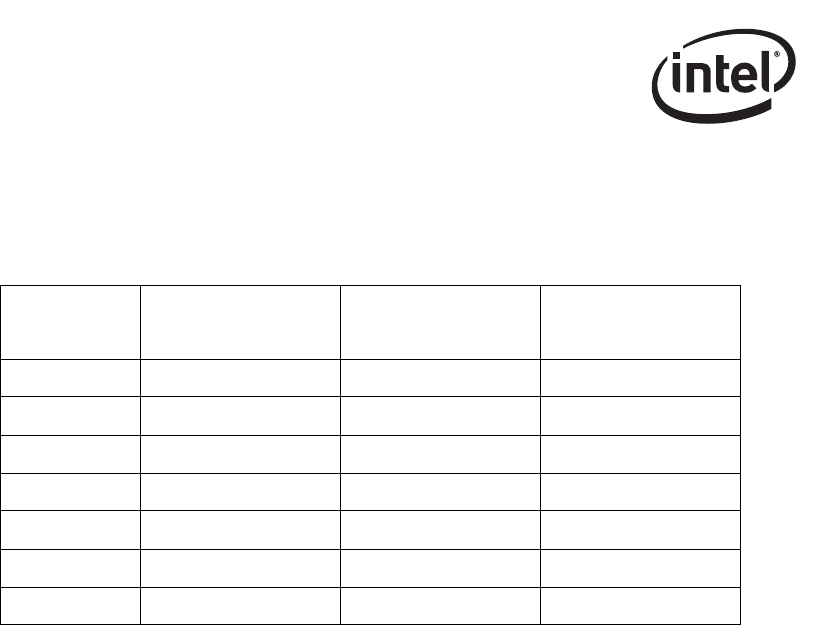
218 Software Developer’s Manual
Register Descriptions
The IODATA register can be written as a byte, word, or Dword access when the IOADDR register
contains a value for the Flash (80000h - FFFFFh). In this case, the value in IOADDR must be
properly aligned to the data value. Additionally, the lower 2 bits of the IODATA PCI-X access must
correspond to the byte, word, or Dword access.Table 13-1 lists the supported configurations:
Software might need to implement special code to access the Flash memory at a byte or word at a
time. Example code that reads a Flash byte is shown here to illustrate the impact of Table 13-1:
char *IOADDR;
char *IODATA;
IOADDR = IOBASE + 0;
IODATA = IOBASE + 4;
*(IOADDR) = Flash_Byte_Address;
Read_Data = *(IODATA + (Flash_Byte_Address % 4));
Reads to IODATA of any size returns a Dword of data. However, the chipset or CPU can only
return a subset of that Dword.
For Intel architecture programmers, the IN and OUT instructions must be used to cause I/O cycles
to be used on the PCI bus. Where 32-bit quantities are required on writes, the source register of the
OUT instruction must be EAX (the only 32-bit register supported by the OUT command).
Writes and reads to IODATA when the IOADDR register value is in an undefined range (20000h -
7FFFCh) should not be performed. Results are indeterminate.
There are no special software timing requirements on accesses to IOADDR or IODATA. All
accesses are immediate except when data is not readily available or acceptable. In this case, the
Ethernet controller delays the results through normal bus methods.
Table 13-1. IODATA Register Configurations
Access Type
Ethernet Controller
IOADDR Register Bits
[1:0]
PCI-X
1
IODATA Access
AD[1:0] Bits in Address
Phase
PCI-X IODATA Access
AD C/BE#[3:0] Bits in
Data Phase
BYTE (8 bits) 00b 00b 1110b
01b 01b 1101b
10b 10b 1011b
11b 11b 0111b
WORD (16 bits) 00b 00b 1100b
10b 10b 0011b
DWORD (32 bits) 00b 00b 0000b
1. The 82540EP/EM does not support PCI-X.



